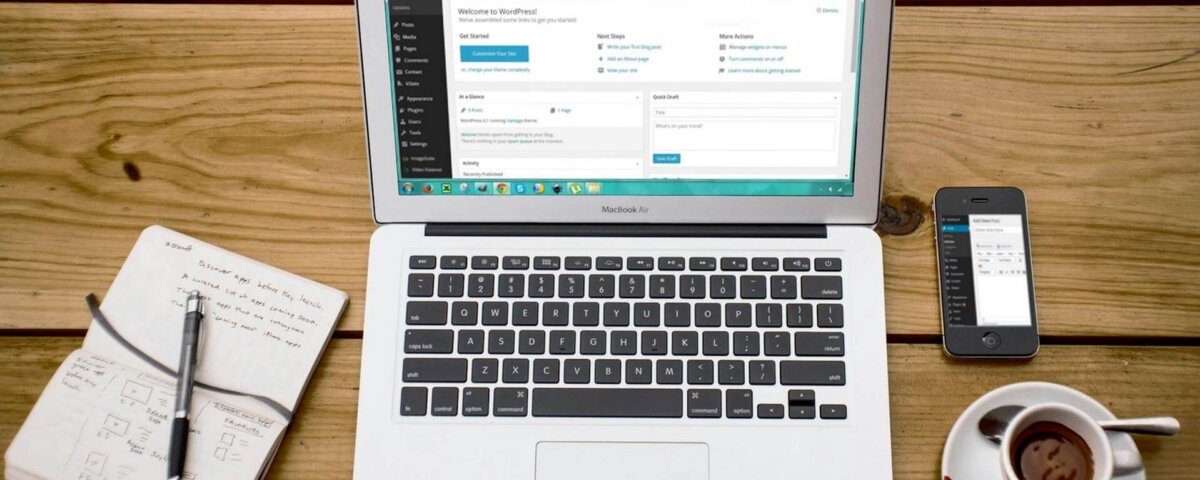
Harnessing the Power of Video Marketing: Trends and Strategies for 2024
May 24, 2024
SEO Management and Optimisation: A Comprehensive Guide
November 14, 2024Tips for Mastering WordPress: A Comprehensive Guide for Beginners and Experts

Introduction
WordPress powers nearly half of the websites in the world, and for a good reason – it’s versatile, user-friendly, and highly customisable. Whether you’re new to WordPress or want to fine-tune your skills, this guide will give you practical tips to make the most of it.
Let’s dive into some easy-to-understand ways to improve your WordPress website.
Ways to improve your WordPress website
1. Choose the Right Hosting
Your website’s performance depends a lot on the hosting you choose. A good hosting provider can make your site faster and more reliable.
- Shared Hosting: Great for beginners, but it might slow down with high traffic.
- Managed WordPress Hosting: Designed specifically for WordPress, with automatic updates and backups.
- Cloud Hosting: Scalable and ideal for growing websites.
☑️ Tip: Choose a local hosting provider with servers in South Africa if your audience is local. This improves site speed for visitors in the region.
2. Pick a Lightweight Theme
Your theme controls the design and layout of your website. A lightweight theme ensures your site loads quickly.
- Popular lightweight themes: Astra, GeneratePress, and Kadence.
- For advanced customisation, consider BeTheme (which supports child themes).
☑️ Tip: Use a child theme if you plan to make changes to your theme files. It ensures your customisations aren’t lost when the theme updates.
3. Optimise Your Images
Large images can slow down your site, frustrating visitors. Before uploading, resize and compress images.
- Tools like TinyPNG and ImageOptim help reduce file sizes.
- For automatic optimisation, use plugins like Smush or ShortPixel.
☑️ Tip: Use the WebP format for even smaller file sizes and faster loading times.
4. Keep WordPress Updated
Updates keep your site secure and ensure compatibility with new plugins or themes.
- Always update WordPress core, themes, and plugins.
- Before updating, back up your site to avoid data loss in case something goes wrong.
☑️ Tip: Set automatic backups to save time and protect your data.
5. Install Only Essential Plugins
Plugins add extra features to your site, but too many can slow it down. Focus on the essentials:
- SEO: All in One SEO or Rank Math.
- Caching: WP Rocket or W3 Total Cache for faster loading.
- Security: Wordfence or Sucuri.
- Backups: UpdraftPlus or BackWPup.
☑️ Tip: Regularly review your plugins and remove any you’re not using.
6. Focus on SEO Optimisation
Search Engine Optimisation (SEO) helps your website rank better on Google.
- Use an SEO plugin like All in One SEO Pro.
- Write descriptive titles and meta descriptions for your pages.
- Add alt text to your images to make them accessible and boost SEO.
☑️ Tip: Use South African spellings and local keywords to target a local audience, like “favourite” instead of “favorite”.
7. Improve Your Website’s Security
WordPress is a common target for hackers, so security is critical.
- Use strong passwords and enable two-factor authentication.
- Install a security plugin like Wordfence or Solid Security.
- Limit login attempts to block hackers from guessing passwords.
☑️ Tip: Keep regular backups to recover your site quickly if something goes wrong.
8. Speed Up Your Website
A fast website keeps visitors happy and ranks better on Google.
- Use a caching plugin like WP Super Cache.
- Optimise your database with a plugin like WP-Optimize.
- Use a Content Delivery Network (CDN) like Cloudflare to serve your site faster to users around the world.
☑️ Tip: Test your website speed with tools like Google PageSpeed Insights and follow their recommendations.
9. Create Great Content
Content is what keeps visitors coming back. Focus on:
- Writing useful, easy-to-read articles.
- Adding high-quality images or videos to make your content more engaging.
- Linking to other pages on your site to help users navigate easily.
☑️ Tip: Plan your content with a calendar to post regularly and keep your site fresh.
10. Make Your Site Mobile-Friendly
Most people browse websites on their phones, so your site needs to look great on smaller screens.
- Choose a responsive theme that adjusts to different screen sizes.
- Use SmallSEOTools Mobile Friendly Test to check your site.
- Consider enabling AMP (Accelerated Mobile Pages) for faster mobile loading.
☑️ Tip: Test your site on different devices to see how it looks and performs.
11. Add Analytics
Understand your visitors with tools like Google Analytics.
- See how many people visit your site and which pages they like the most.
- Use Google Tag Manager to easily add tracking scripts without editing code.
- Install plugins like MonsterInsights to view analytics directly in WordPress.
☑️ Tip: Use the data to improve pages that aren’t getting much attention.
12. Customise Your Site Further
Want your site to stand out? Take advantage of WordPress’s customisation options.
- Use Advanced Custom Fields (ACF) to add extra information to posts or pages.
- Create custom post types for unique content like portfolios or events.
- Add custom PHP or CSS safely with the Code Snippets plugin.
☑️ Tip: Keep customisations simple to avoid breaking your site during updates.
13. Build a Community Around Your Website
Encourage visitors to interact with your site:
- Add a contact form or comment section.
- Offer exclusive content for subscribers or members.
- Use email marketing tools like Mailchimp to send updates and offers.
☑️ Tip: Personalise your emails by addressing subscribers by name to make them feel valued.
Conclusion
WordPress is a powerful tool for creating websites, but it’s even better when you use it effectively. By following these tips, you’ll build a site that’s fast, secure, and easy to manage – whether you’re running a blog, business site, or online shop. Check out our portfolio page.
Do you have questions about WordPress or need help? Contact us today!







